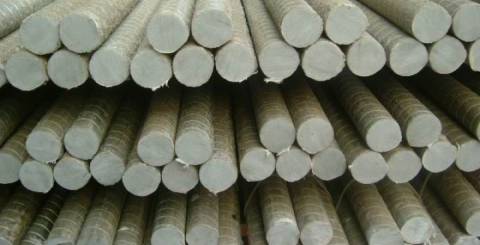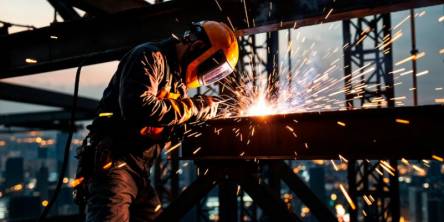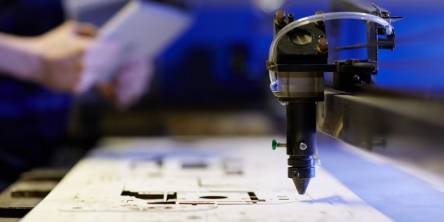Why Steel Must Be Replaced with Composites to Achieve Sustainability

The history of steel in construction dates back many years. Before steel, builders used cast iron for constructing structures. With the passage of time, it was inevitable that a new material came in to replace steel; composite materials (steel & aluminum with other composite materials) is one such thing. Some advanced and unique properties associated with these materials make them superior to steel in many ways.
These materials possess the qualities of traditional materials, which are bonded with 2 unique components; reinforcement of matrix (epoxy polymer) and a high-performance carbon or glass. Both are combined in a way to make use of the benefits of both original components.
One of the most popular forms of composite materials is the fiberglass reinforced polymer (FRP) or GFRP (Variant of FRP) materials. Lots of construction projects are using this in replace of steel replacement, to obtain benefits such as durability and maximum sustainability in structures. You won't find such great features available in other construction materials, such as steel.
This article will help you in answering the question ‘why steel must be replaced with composite materials in order to gain structural sustainability?’.
Steel vs Composite materials
Steel is undoubtedly a great resource for constructing solid concrete infrastructure, but it has certain limitations.
Structural steel helped builders in building high-rise buildings with limited sustainability and fire resistance but when it came to corrosion and max-sustainability features, steel is definitely not the best choice.
Such advantages are present in composite materials like FRP or GFRP. There are several advantages to GFRP rebar, you can view some important benefits here.
Steel only has the combined features of iron and carbon, whereas composite materials have all features that are offered by steel along with additional features such as sustainability and corrosion protection. Also, they are very lightweight and have a powerful resin system.
Composite material properties:
Steel has plenty of good properties and still plays a key role in several construction applications, however, it does not provide you with maximum sustainability, due to its limitations. This objective is achieved when composite materials such as GFRP rebar, is used in construction projects.
These materials have the following features:
Corrosive Resistant:
Composite materials, like GFRP rebar, are gaining popularity and commercial value due to their unique property of corrosive resistance; keeping concrete strong and intact even after 100 years.
On the other hand, steel is not a rust-free material and concrete structure built with steel may get corrosive when they are exposed to extreme weather conditions (extreme cold and heat).
You can see examples of bridges and other buildings constructed around water, which can erode over time. Therefore, builders are more and more preferring composite materials in their projects.
Best for Sensitive Concrete Structures:
Unlike steel which is not a suitable material for sensitive concrete structures, GFRP rebar is very suitable for such structures.
Sensitive structures like dams, power plants, seawalls, etc. have to be reinforced with corrosion-resistant rebar.
This increases the service life of these concrete structures, which is not possible with other traditional reinforced materials.
Low cost and maintenance:
We know that steel is a less-expensive construction material, but its maintenance costs are very high. Whereas, glass fiber reinforced polymer and other composite materials are less expensive to maintain over time.
Non-conductive to electricity:
Another great feature of composite materials is that they are non-conductive to electricity. This makes them an ideal choice for facilities like power generation plants and scientific labs, which may not work well with other traditional materials.
Listed above are some major features and benefits of composite materials and why steel should be replaced by them to achieve sustainability and additional constructional benefits.
If you are looking for high-quality composite materials from a trusted supplier, Tuf-Bar would be an ideal choice for you. They supply high-quality GFRP rebar and additional composite products.
Similar Articles
When you see a steel ship in the harbor, the first impression is usually sheer scale.
Explore CNC turning—its components, process, benefits, applications, and future trends shaping modern precision manufacturing in various industries.
In the competitive industry of car manufacturing, attaining exceptional performance along with an innovative design needs the incorporation of modern manufacturing technologies
Facing delays, quality issues, or supply chain problems in hardware manufacturing? Learn the top 7 challenges—and practical fixes—to streamline production.
In the rapidly advancing landscape of high-tech manufacturing, electronics, and materials science, diamonds are no longer just gemstones they’re high-performance materials redefining what’s possible in technology.
A business in the manufacturing industry today has to ensure that it chooses the precision-engineered components suppliers keenly since the competition is very stiff
Selective Laser Sintering, or SLS, has established itself as one of the most reliable and widely used 3D printing technologies. This method is valued for its ability to produce complex, durable, and high-quality parts without the constraints of traditional manufacturing.
In the retail and display industry, the visual appeal of products is paramount. Customers are constantly drawn to displays that are not only eye-catching but also provide an immersive experience.
As previously established, CO2 laser technology operates by shining a high-power infrared beam on a mixture of gas that contains carbon dioxide, nitrogen, and helium. This technology is well known for the fact that it is able to engrave onto a variety of materials such as wood, glass, plastic, leather, and even some metals with high precision and without contact.









